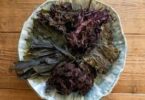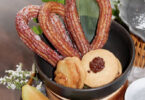(CNN) : As the summer heat builds, we couldn’t help but wonder: Is there anybody in the world who doesn’t love ice cream?
Whether it’s in Asia, Europe, the United States or South America, it’s safe to say that the frozen treat tends to be a favorite indulgence for anyone of any age, though it’s hard not to picture a child holding a cone on a hot day, with the melting substance dripping down their arm.
San Francisco and New York are even home to locations of the hugely popular Museum of Ice Cream, a sprawling homage to the sweet, chilly delicacy.
According to culinary history, ice cream dates back to the second century BCE. Alexander the Great, of Greece, liked snow and ice flavored with honey and nectar. And Emperor Nero, of Rome, enjoyed snow flavored with fruits and juices.
More than 1,000 years later, Marco Polo brought a sherbet-like recipe to Italy from the Far East that eventually evolved into ice cream as most of us know it today.
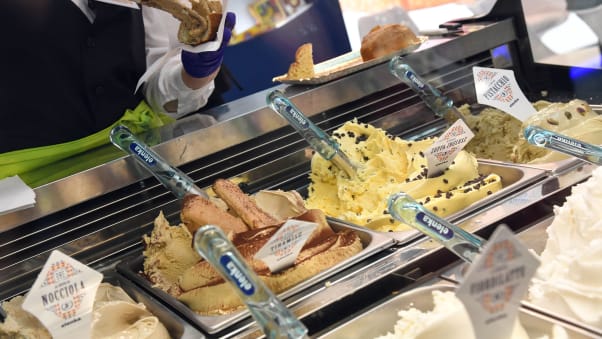
Ice cream may be universally appealing, but many countries have their own version, according to Jeni Britton Bauer, founder of the ice cream brand Jeni’s Splendid Ice Creams and the author of two books on the subject.
“Every culture has a different interpretation of ice cream that’s often not called ice cream, and it’s a food that brings people together,” she says. “You gather at your local ice cream store or at an ice cream cart on the street.”
Eating ice cream is a fun and physical experience, adds Britton Bauer. “The first bite shocks and wakes you up with its coldness, and you need to constantly tend to your ice cream so it doesn’t melt away,” she says.
From frozen custard in the United States to kulfi in India, enjoy a taste of ice creams around the world and awaken your inner child.
Frozen custard, United States
Soft serve frozen custard is the quintessential American ice cream, according to Bruce Weinstein, author of “The Ultimate Ice Cream Book,” a comprehensive collection of 500 different recipes.
Different than frozen yogurt, which is made with cultured yogurt and sugar, frozen custard is a combination of milk, cream, sugar and egg yolks. It also typically has a thickener, says Weinstein.
Traditional American ice cream sometimes has egg yolks, too, but the difference between frozen custard and ice cream is the texture: custard is dense because it’s made in a machine that doesn’t incorporate air into the ingredients.
Ice cream machines, on the other hand, churn air into the recipe, making the end result airier and lighter than custard.
When it comes to frozen custard flavors, Americans typically have a choice between vanilla or chocolate. They can also go for a swirl — a combination of the two. “You roll your custard in sprinkles or dip it in a red or chocolate syrup that instantly freezes into a hard shell,” says Weinstein.
Dairy Queen, the Midwest fast food restaurant chain Culver’s and Carvel are all popular go-to spots in the US to get your frozen custard fix.
Raspado, Mexico
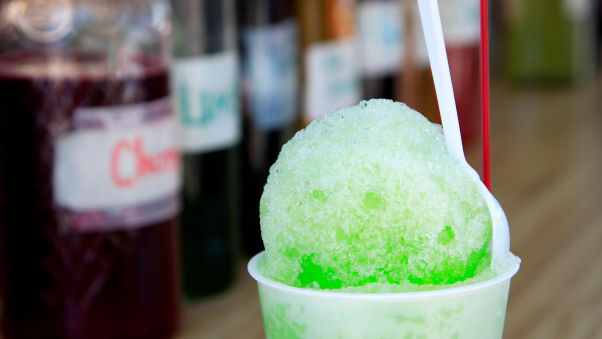
Think of raspados as the Mexican version of American snow cones. But while snow cones are made using excessively sweet syrup, raspados have real fruits or fresh fruit juices. In fact, making them is something of a craft.
The sweet and cold treat is ubiquitous throughout Mexico and sold at street carts, says Lillian Aviles, a Mexico City-based expert on Mexican culture. “These carts sell a range of fruit-based flavors such as tamarind, lime, pineapple, orange and mango,” she says. “There are also non-fruit flavors available such as vanilla and rompope, which is similar to eggnog.”
In many Mexican markets, says Aviles, vendors make a blend of a raspado and a milkshake called “eskimo” using milk, condensed milk, fresh seasonal fruit, sugar, vanilla and shaved ice.
And, different parts of Mexico make varieties of raspados. For example, in the coastal town of La Paz, the ice cream shop La Fuente, located on the waterfront´s esplanade, sells raspados with a serving of ice cream on top, usually in its signature orange yogurt flavor.
You won’t find Mexicans eating their raspados in cones — Aviles says that they’re only served in cups.
Gelato, Italy
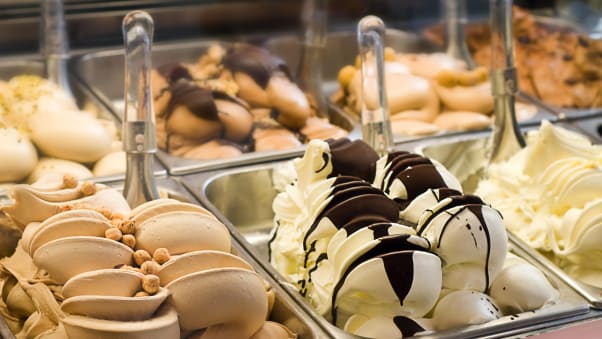
Pasta aside, gelato is considered to be Italy’s culinary symbol. In fact, visiting the local gelateria is a way of life for Italians.
“Italians convene at gelaterias and socialize,” says Britton Bauer. “They’re popular hangouts and cultural icons.”
Italian gelato is lower in fat than traditional ice cream, says Weinstein, and crafted with whole milk, eggs, sugar and flavoring — chocolate, hazelnut, pistachio and stracciatella or vanilla ice cream mixed with pieces of chocolate are the most beloved flavors.
“We cannot make gelato the Italian way in the US,” says Weinstein. “Our milk doesn’t have enough fat. We must add cream.”
And forget the standard ice cream scoop: In Italy, gelato is served using a spatula that presses the cool treat into a cup or cone.
Italians from north to south fiercely debate about which gelateria in town is the best, says Luca Finardi, the general manager of the Mandarin Oriental in Milan. “We each have the ones we love the most,” he says.
Finardi’s go-to in Milan is Massimo Del Gelato, near Chinatown. “The shop specializes in chocolate flavors including chocolate cherry and chocolate cinnamon and is probably the best in Italy,” he says. “The ice cream is made fresh every day.”
Crème Glace, France
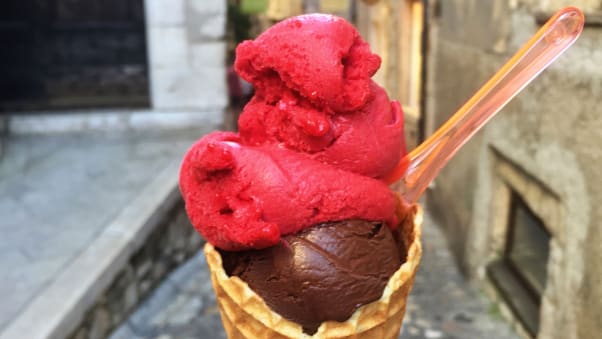
It looks like gelato and has a similar texture, but crème glace or French ice cream is richer than its Italian counterpart, says Weinstein.
“Glace is a nice cross between American frozen custard and gelato and almost always made using cream and eggs,” he says. “Salted caramel is definitely the most iconic flavor.”
According to culinary history, the still-operating Parisian restaurant Le Procope, which an Italian immigrant opened in the late 17th century, introduced ice cream to France. While this legendary spot still serves glaces, it’s more known today for its savory dishes.
Nowadays, the French get their glace fix by hitting one of the family-run ice cream specialty shops scattered throughout the country where the owners hand make the frozen dessert using the purest dairy and top-quality fruits, nuts and chocolate.
However, a few nationally recognized glace shops exist, says Weinstein, including the enduringly popular Berthillon in Paris (the gianduja or hazelnut glace is a must here).
Fenocchio Glacier, in Nice, is another popular name and serves more unusual ice cream flavors. Standard picks include white chocolate and coffee, but the shop also offers varieties such as olive, chewing gum and vanilla with pink pepper.
Dondurma, Turkey
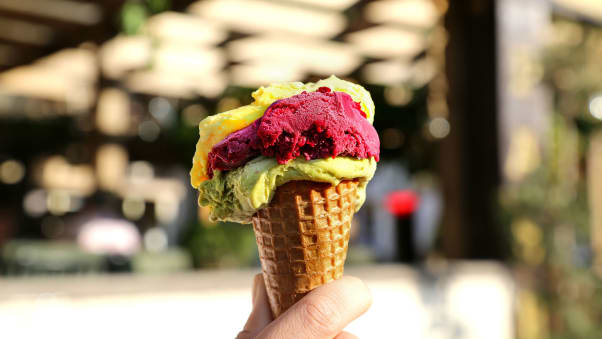
An ice cream that doesn’t melt? Yes, that’s exactly what dondurma or Turkish ice cream is. Locals also call it Maras dondurma, after the city in the Mediterranean region of Turkey.
Karen Fedorko Sefer, the founder of the travel company Sea Song Tours and an Istanbul resident, says that dondurma has an elastic texture and is made with goat milk, sugar and salap, which is the pulp of a purple orchid. It also often has mastic or a pine flavored resin that’s extracted from a mastic tree.
“Buying dondurma is like watching a performance,” says Fedorko Sefer. “The men who sell it wear traditional Turkish garb (aba) and a sultan hat and stretch, twist and turn the ice cream until it lands into a cone. Kids and adults get a kick out of the show.”
The Turkish buy their dondurma from a street cart or at a bazaar. “There are not really shops,” says Fedorko Sefer.
Ali Usta, in Istanbul’s Moda neighborhood, is among the exceptions. Established in 1969, the shop offers flavors such as hazelnut, walnut and melon. But be prepared to wait in a long line for a taste, especially during the summer.
Kakigori, Japan
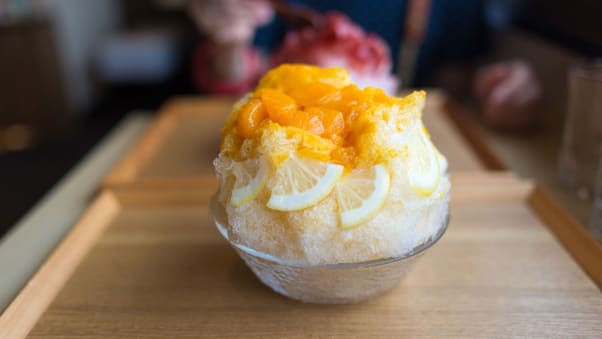
It may be made of ice, but kakigori, the Japanese version of ice cream, is most definitely not a snow cone.
“The real kakigori uses super finely shaved ice and melts in your mouth just like a creamy ice cream,” says Sakura Yagi, the COO of TIC Restaurant Group, a collection of Japanese restaurants in Manhattan’s East Village including Cha An Tea House, which serves house made kakigori.
Pastry chefs make kakigori by shaving ice from ice blocks until it builds into a fluffy pile. They then add syrups to the ice — usually crafted by hand with quality ingredients — in flavors such as green tea, strawberry, grape and melon.
Kakigori sometimes also has condensed or evaporated milk and is almost always served in a bowl. Yagi adds that it’s not unusual to find sweet shops throughout Japan offering toppings as the final touch, most commonly red bean paste or fresh fruit.
“The beauty of kakigori is in the simplicity,” she says. “The Japanese eat it mostly in the summer and get excited about enjoying it, especially the latest in-season flavors.”
Kulfi, India
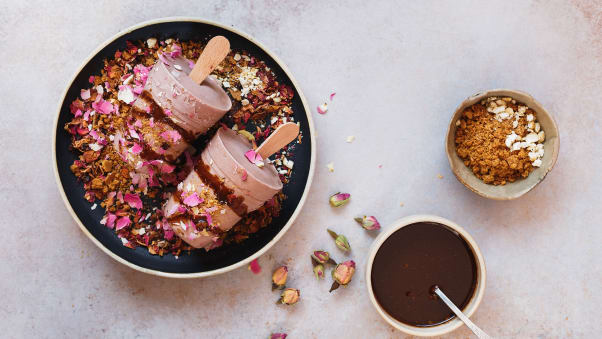
Kulfi, India’s traditional ice cream, dates back to the 16th century and may be one of the richest frozen desserts in the world, says Camellia Panjabi, the well-known Indian food writer.
Given its main ingredient — sweetened evaporated milk — it’s no surprise why.
“In making kulfi, you boil down the milk, which caramelizes it, and the end result is a very luscious ice cream,” says Panjabi. “After you boil it down, you can also add flavors such as saffron threads, crushed pistachios or crushed almonds.”
While kulfi at its core doesn’t deviate from these iterations, the options have gotten more varied in the last several decades, according to Panjabi. At kulfi shops across India and the kulfi stands on Mumbai’s Chowpatty Beach, along with at Indian restaurants worldwide, it’s not unusual to find orange, banana, chocolate, mango and seasonal berry kulfis.
Kulfi also stands apart from other ice creams because it’s usually pre-molded into a long popsicle like shape or cone, frozen and then served.
Britton Bauer, who has tried kulfi in the United States, describes it as very sweet and “almost honey-like.”

